Software Development Agreement Samples
-
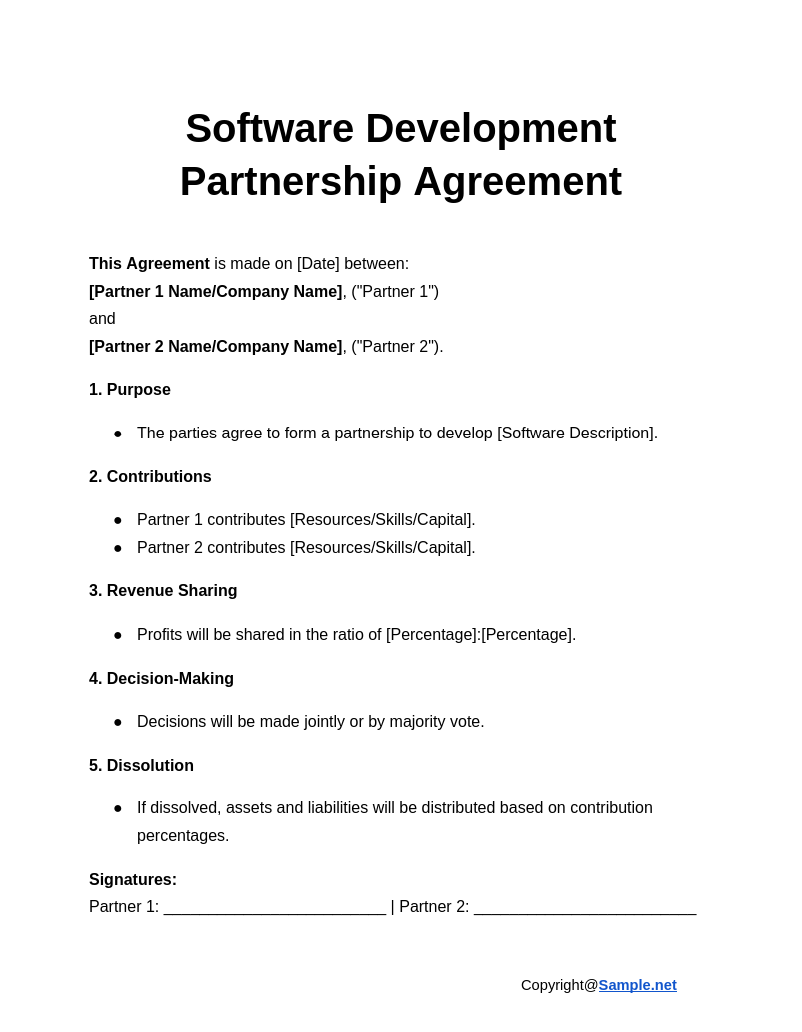
Software Development Partnership Agreement
download now -
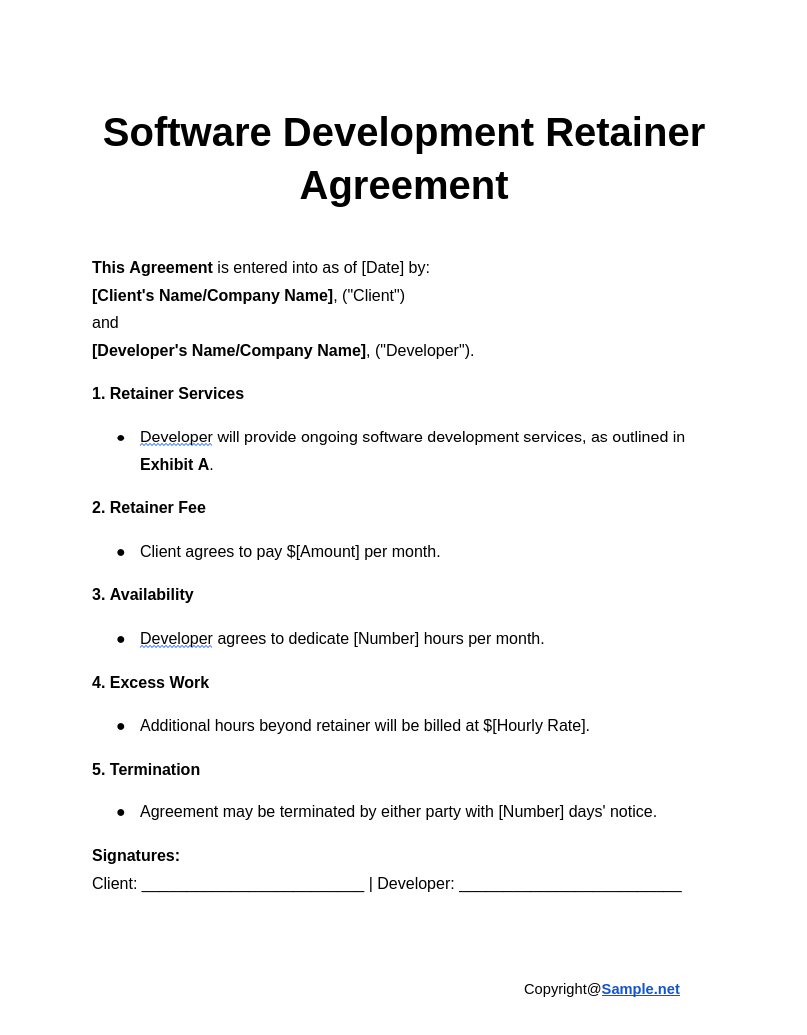
Software Development Retainer Agreement
download now -
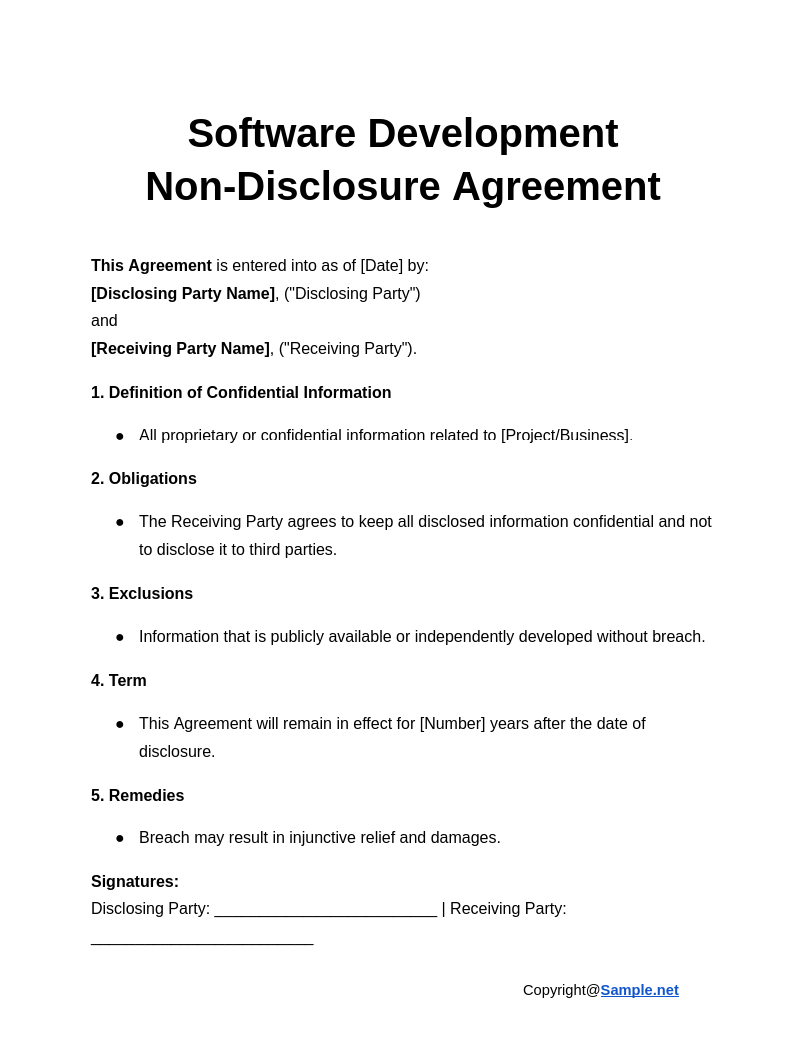
Software Development Non-Disclosure Agreement
download now -
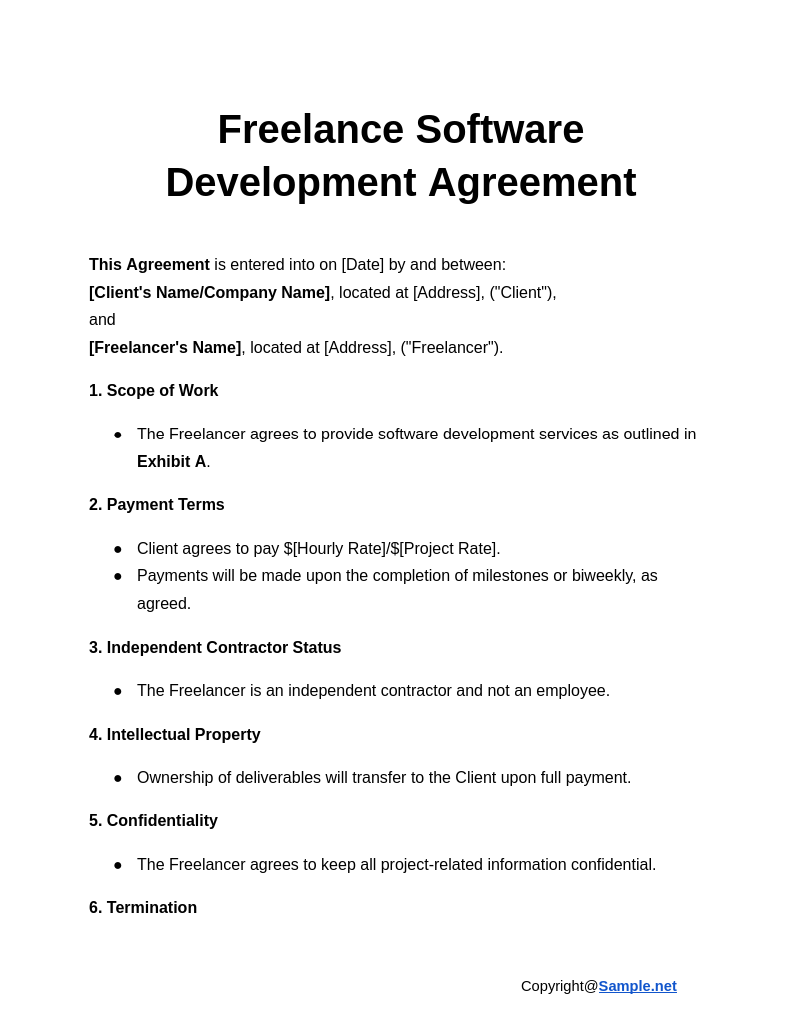
Freelance Software Development Agreement
download now -
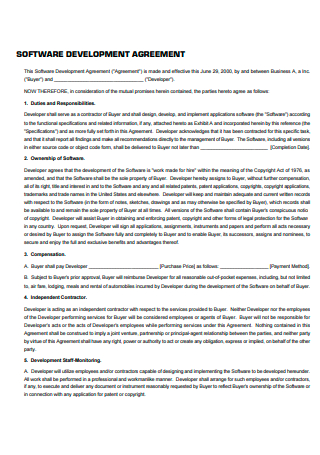
Software Development Agreement Template
download now -
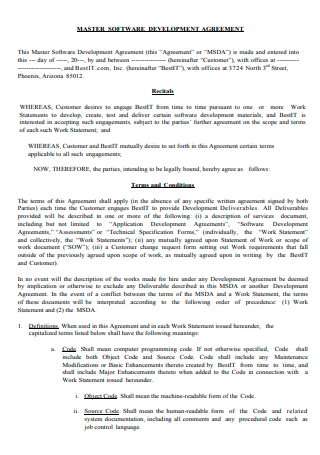
Master Software Development Agreement
download now -
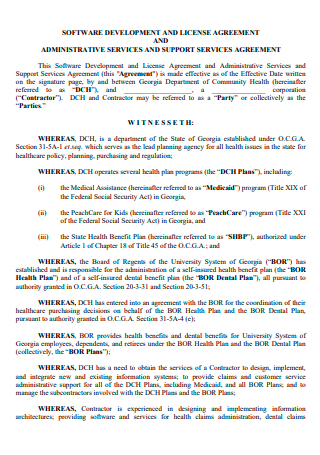
Software Development and License Agreement
download now -
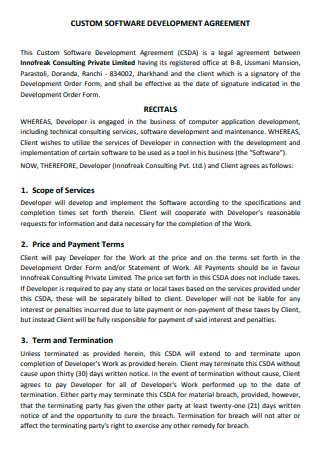
Custom Software Development Agreement
download now -
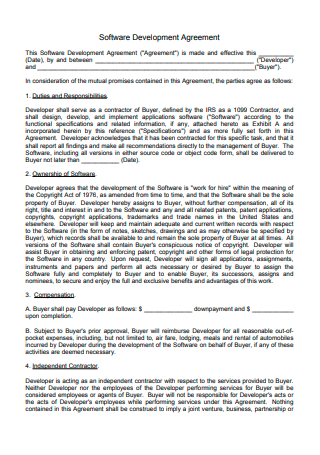
Basic Software Development Agreement
download now -

Software Development Distribution Agreement
download now -

Agile Software Development Agreement
download now -
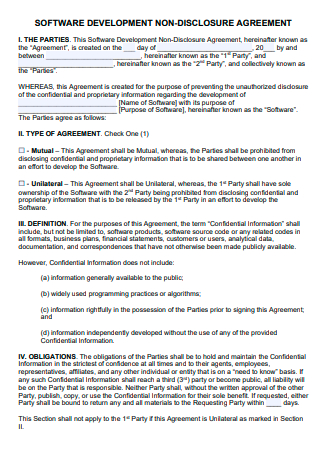
Software Development Non-Disclosure Agreement
download now -

Formal Software Development Agreement
download now -
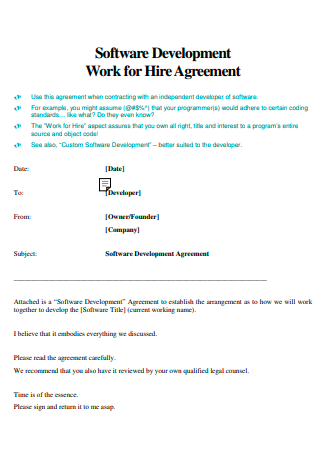
Software Development Work For Hire Agreement
download now -
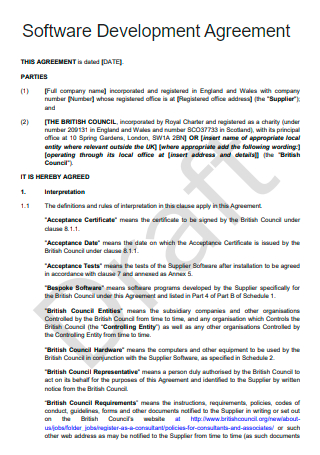
Draft Software Development Agreement
download now -
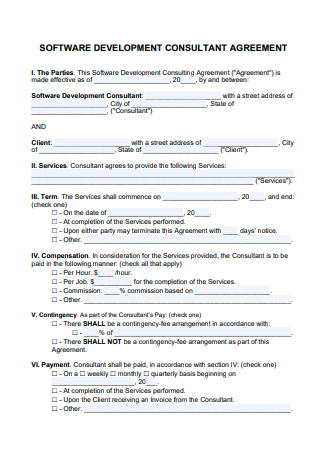
Software Development Consultant Agreement
download now -
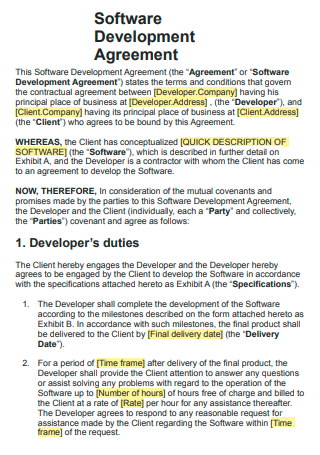
Printable Software Development Agreement
download now -
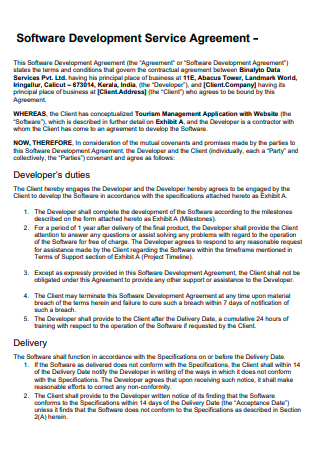
Software Development Service Agreement
download now -
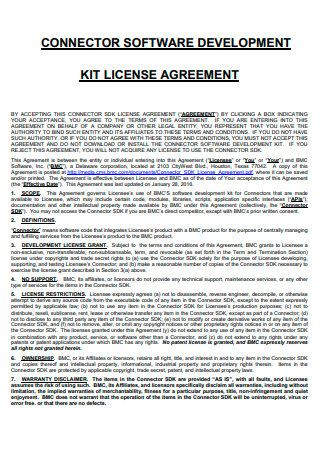
Connector Software Development License Agreement
download now -

Standard Software Development Agreement
download now -
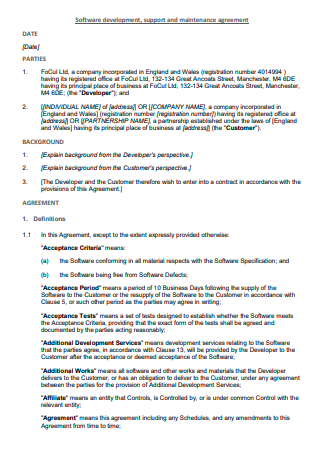
Software Development Agreement in PDF
download now -
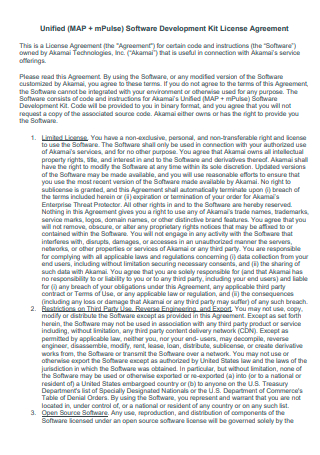
Unified Software Development Agreement
download now -
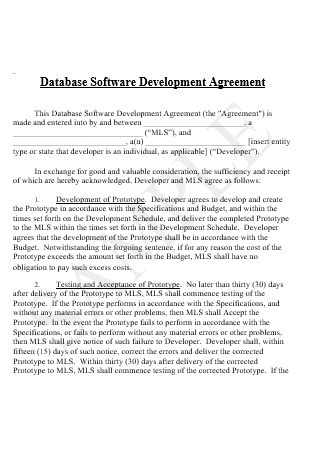
Database Software Development Agreement
download now
FREE Software Development Agreement s to Download
Software Development Agreement Format
Software Development Agreement Samples
What is a Software Development Agreement?
Important Parts of a Software Development Agreement
How to Create a Software Development Agreement
FAQs
What is the role of a Software Developer?
What is the difference between Software Development and Web Development?
What is System Software?
What happens if either party breaches the Software Development Agreement?
How does a Software Development Agreement address confidentiality?
What is the role of timelines in a Software Development Agreement?
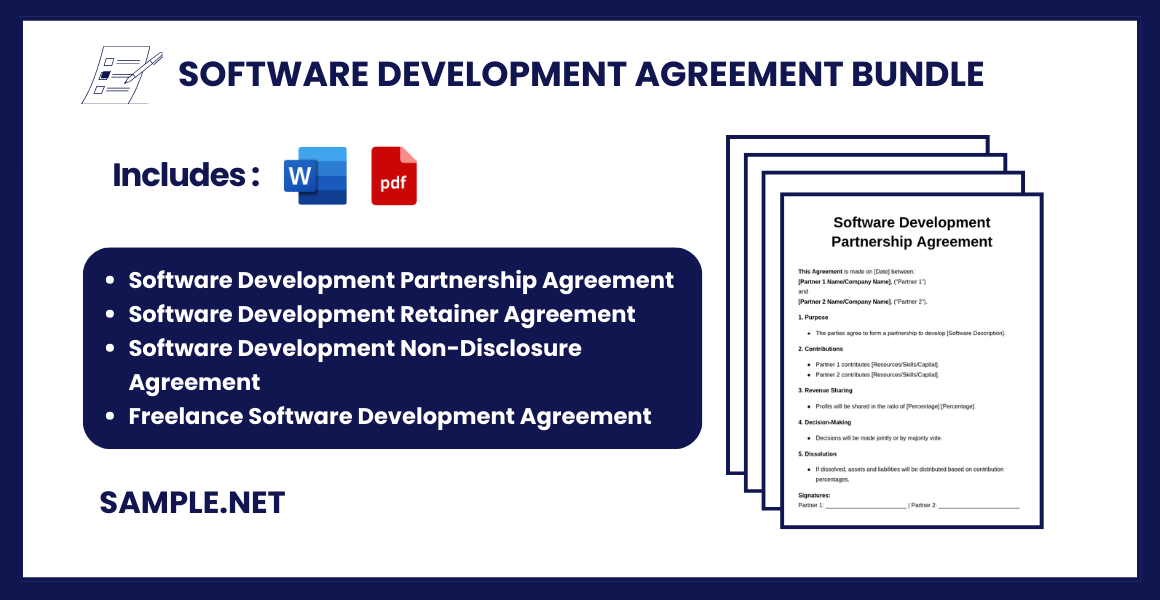
Download Software Development Agreement Bundle
Software Development Agreement Format
This Agreement is entered into as of [Date] by and between:
[Client’s Name/Company Name], located at [Address], (“Client”),
and
[Developer’s Name/Company Name], located at [Address], (“Developer”).
The parties agree as follows:
1. Scope of Work
- Developer agrees to design, develop, and deliver software as described in Exhibit A (the “Project”).
- Any modifications or additions to the Scope of Work must be agreed upon in writing by both parties.
2. Deliverables and Timeline
- Developer will deliver the software and associated deliverables according to the milestones outlined in Exhibit B.
- Time is of the essence. Any delays must be communicated promptly, and revised timelines must be mutually agreed upon.
3. Payment Terms
- The Client agrees to pay the Developer a total fee of $[Amount], payable as follows:
- [Percentage]% upfront upon signing this Agreement.
- [Percentage]% upon completion of milestone [Milestone Name].
- Final payment upon acceptance of the completed Project.
- Additional fees for out-of-scope work will be billed at $[Hourly Rate] per hour, upon Client approval.
4. Ownership and Intellectual Property
- Upon full payment, the Client will own all rights, title, and interest in the software and deliverables.
- Developer retains the right to use non-proprietary or reusable components, frameworks, and tools used in the development.
5. Confidentiality
- Both parties agree to keep all information related to this Agreement confidential, including technical, financial, and business details.
- This clause survives the termination of this Agreement.
6. Warranties and Representations
- Developer warrants that:
- The software will conform to the specifications outlined in Exhibit A.
- It will not infringe on any third-party intellectual property rights.
- Developer disclaims all other warranties, including merchantability or fitness for a particular purpose.
7. Limitation of Liability
- Neither party will be liable for any indirect, incidental, or consequential damages arising from this Agreement.
8. Termination
- Either party may terminate this Agreement with [Number] days’ written notice.
- In the event of termination, the Client will pay for completed work up to the termination date.
9. Governing Law and Dispute Resolution
- This Agreement will be governed by the laws of the State of [State].
- Disputes will first be resolved through mediation. If mediation fails, disputes may be submitted to binding arbitration.
10. Miscellaneous
- Entire Agreement: This Agreement, including all exhibits, constitutes the entire agreement between the parties.
- Amendments: Changes must be made in writing and signed by both parties.
- Notices: All notices must be sent to the addresses listed above.
Signatures
Client:
Signature: ___________________________
Name: ______________________________
Date: _______________________________
Developer:
Signature: ___________________________
Name: ______________________________
Date: _______________________________
What is a Software Development Agreement?
A Software Development Agreement is a legal document that specifies the obligations, expectations, and deliverables between a client and a developer. It typically includes details about the scope of work, timelines, payment schedules, intellectual property rights, and dispute resolution methods. Such agreements are crucial for avoiding misunderstandings and ensuring the successful completion of software projects, fostering a professional relationship between both parties. You can also see more on Client and Developer Agreement.
Important Parts of a Software Development Agreement
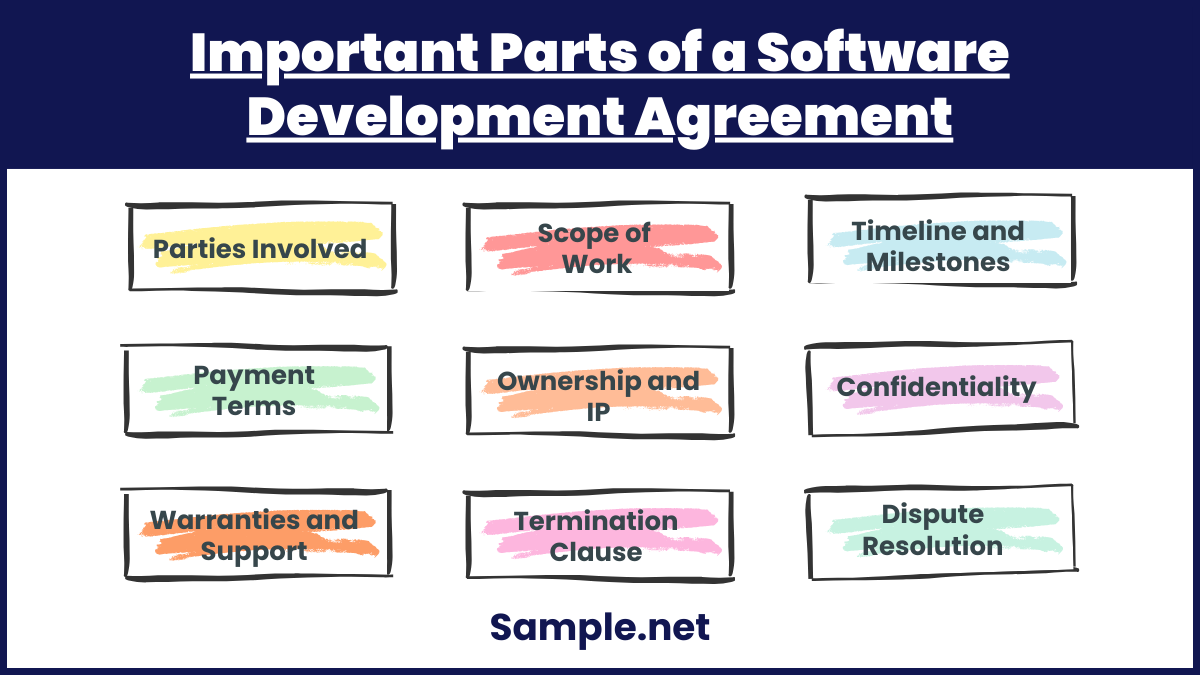
Here are some of the key parts/clauses that should be included whenever drafting a software development agreement:
1. Parties Involved
Clearly identify the parties entering into the agreement. Include the full legal names, business addresses, and contact information of both the developer (individual or company) and the client (individual, company, or organization). This ensures clarity about who holds responsibilities and rights under the contract. You can also see more on Software Development Outsourcing Contract.
2. Scope of Work (SOW)
Provide a detailed description of the project. This includes the objectives, deliverables, features, functionalities, and any specific requirements. It should also outline what is excluded from the scope to avoid misunderstandings. The SOW ensures both parties are aligned on the project’s expectations.
3. Timeline and Milestones
Specify a clear project timeline, including start and end dates. Break the project into milestones with deadlines for each phase (e.g., design, development, testing). Include review periods for the client to assess progress and provide feedback. This keeps the project on track and manageable.
4. Payment Terms
Detail the total cost of the project and the payment structure, such as hourly rates, fixed fees, or milestone-based payments. Include payment schedules (e.g., 30% upfront, 40% after a milestone, and 30% on completion) and penalties for late payments. Ensure clarity on additional charges for scope changes. You can also see more on Web Development Agreement.
5. Ownership and Intellectual Property Rights (IP)
State who will own the software, source code, and associated IP after completion. Typically, clients retain ownership upon final payment, but developers might retain the rights to use reusable components, libraries, or tools. This section prevents disputes over who controls the final product.
6. Confidentiality
Include a non-disclosure clause to protect sensitive information shared during the project, such as trade secrets, business processes, or proprietary data. Specify the duration of confidentiality (e.g., during the project and for a set time after its completion).
7. Warranties and Support
Define the warranties provided, such as assurance that the software will function as intended. Include a timeframe for free bug fixes (e.g., 90 days post-launch) and outline ongoing maintenance or support options, including costs if they extend beyond the initial warranty period.
8. Termination Clause
Outline the conditions under which either party can terminate the agreement. Include scenarios like missed payments, project delays, or failure to meet obligations. Define the consequences of termination, such as refunding unused funds or delivering completed work to the client.
9. Dispute Resolution
Specify how disputes will be handled. Options include mediation, arbitration, or legal action in a specified jurisdiction. Include details about who bears the costs of resolution. This ensures that both parties have a clear process to resolve conflicts efficiently. You can also see more on Software Developer Contract.
How to Create a Software Development Agreement
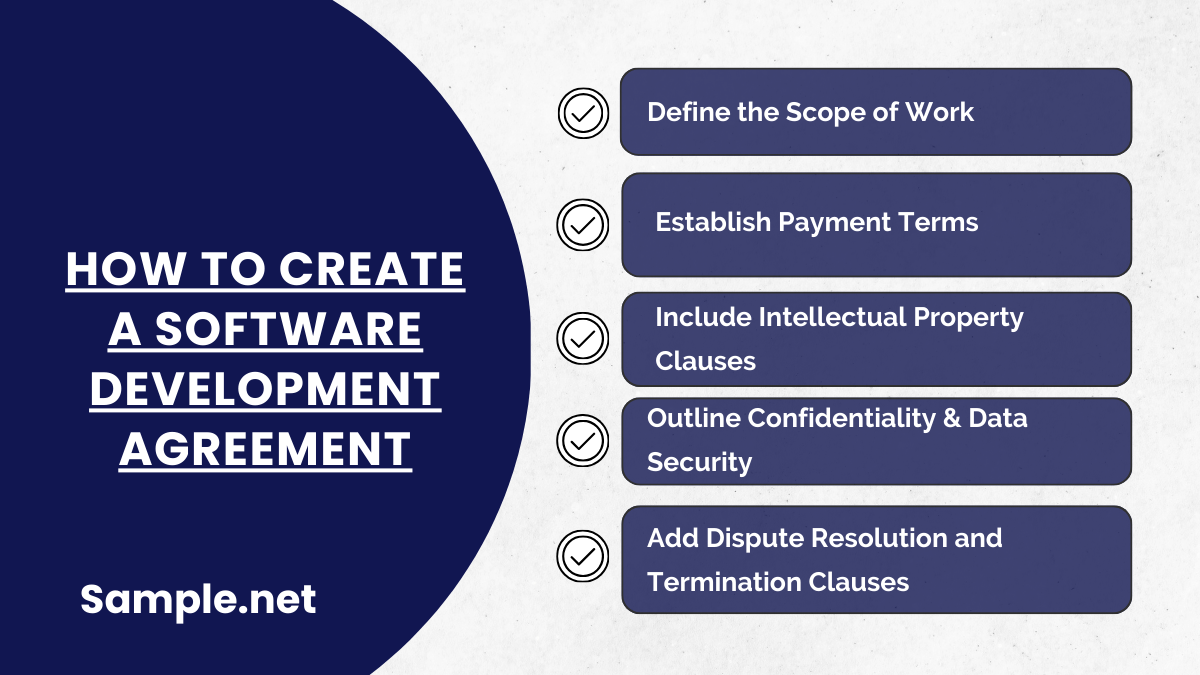
Step 1: Define the Scope of Work
Start by clearly defining the scope of the project. Outline the purpose of the software, its key features, functionalities, and deliverables. Include timelines for each milestone and specify any technical requirements or tools that will be used. Ensure that both parties agree on what constitutes project completion to avoid future disputes.
Step 2: Establish Payment Terms
Create a transparent payment structure. Specify whether payments will be made upfront, at milestones, or after project completion. Mention the exact amounts, due dates, and acceptable payment methods. Include a refund policy in case of project cancellation or non-completion. Ensuring financial clarity protects both parties and builds trust. You can also see more on Software License Agreement.
Step 3: Include Intellectual Property Clauses
Detail the ownership of the software and related assets. Typically, the client retains full intellectual property rights upon completion and payment. If the developer retains certain rights, such as code reuse, explicitly state these in the agreement. This clause ensures both parties understand their rights over the product.
Step 4: Outline Confidentiality and Data Security
Add clauses to protect sensitive information shared during the project. A confidentiality agreement (NDA) should specify what information is protected and the duration of the confidentiality. Include provisions for data security, especially if personal or proprietary data will be handled during development.
Step 5: Add Dispute Resolution and Termination Clauses
Include terms for resolving disputes, such as mediation or arbitration, to avoid costly litigation. Specify under what conditions the agreement can be terminated, such as project delays, non-payment, or failure to meet expectations. Clearly outline the steps for termination to ensure an amicable process. You can also see more on Software Maintenance Agreement.
FAQs
What is the role of a Software Developer?
The role of a software developer is essentially in the name itself. They develop different types of software from the favorite editing application you use down to the video game you spend countless hours on. Software developers can also focus on a massive number of networks, which makes them a Systems Software Developer. Generally speaking, a software developer will assess what the end-user or the customer needs and develop software according to what they need.
What is the difference between Software Development and Web Development?
The difference between software development and web development is that software development is concerned with the applications or programs used in computer systems, and the individuals in charge of this process are referred to as software developers. Web development, on the other hand, is concerned with the creation of interactive web pages via the use of coding and markup. Web developers are the individuals in charge of this procedure. You can also see more on Source Code License Agreement.
What is System Software?
System software is a type of software that refers to the program that is utilized by your computer for the purpose of translating the input commands into a language that the machine can accurately interpret or read. Also known as an operating system (OS), system software will take control of a computer’s hardware components once it has been booted up. Personal computers, web servers, and proprietary systems make use of this type of software for their operations.
What happens if either party breaches the Software Development Agreement?
The agreement usually includes breach-of-contract clauses that outline consequences such as penalties, refunds, or legal action. It may also specify mediation or arbitration as the preferred method for resolving disputes, reducing the need for costly litigation. You can also see more on Technology Agreement.
How does a Software Development Agreement address confidentiality?
It includes confidentiality clauses to protect sensitive information shared during the project. These clauses may extend beyond the project’s duration, ensuring that proprietary information remains secure indefinitely.
What is the role of timelines in a Software Development Agreement?
Timelines set clear expectations for project milestones and delivery dates. They help manage progress, ensure accountability, and provide grounds for penalties or renegotiations if deadlines are missed. You can also see more on IT Service Agreement.
